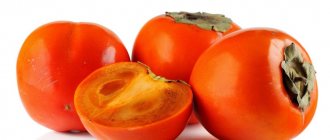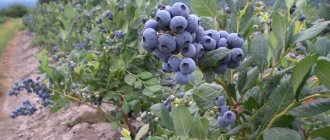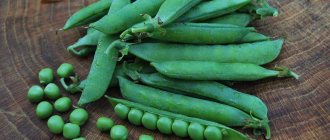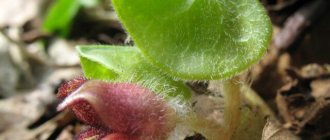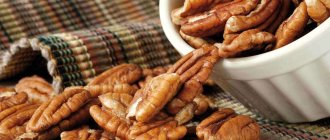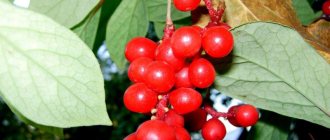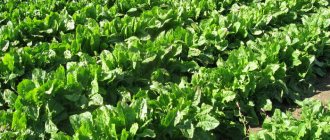What it is
Sesame is a small (about 3 mm long by 2 mm wide), teardrop-shaped seed with a nutty flavor and a soft, crunchy texture. Depending on the species, they come in different colors: white, yellow, black and red.
Sesame adds a nutty aroma to sushi and rolls, French fries and salads, and is an ingredient in delicious and nutritious spicy mixtures - tahini and hummus. Oil is extracted from the seeds and used in cooking.
Sesame seeds are often sprinkled on bread, crackers, cookies and other baked goods and sweet confections.
What sesame looks like - photo
general description
Sesame is a tall annual herbaceous plant of the Pedaliaceae family that is widely grown in Asia, especially in Burma, China and India. It is also one of the main crops for commercial cultivation in Nigeria, Sudan and Ethiopia. Scientific name: Sesamum indicum.
Sesame and sesame are the same name for this spice.
It can reach a height of 2 m. It has pink or white flowers and long leaves.
How sesame grows - photo
This is what a sesame plant looks like.
After flowering, pods will appear containing small white, brown, red or black seeds depending on the variety.
The pod (2-5 cm long) is a long rectangular capsule-like box with deep grooves on the sides. Each contains up to 100 or more seeds.
What is the difference between black sesame and white sesame
Sesame seeds have an outer coating that can be removed. It is also called the shell or husk.
White sesame is a seed that has been hulled. They are relatively easy to find on sale and are more popular.
The difference between black and white sesame is relatively small and they can be used interchangeably.
- The most obvious difference will be the color. Black sesame seeds are not peeled, while white sesame seeds have the shell removed, that is, these are the inner parts of the seeds. Another difference is the texture.
- Black sesame seeds are richer in calcium than their white counterparts. They are also slightly bitter as a result of the presence of the shell.
Growing technique
As practice shows, although the places where sesame grows are tropical, it can be grown in the southern, and with proper care, in the central regions of Russia and Ukraine. The main condition for its growth is warm soil. Sowing can be done when the soil warms up to +18 and the air from +25 to +30 degrees.
It is important to remember: as soon as the temperature drops to +2...+3 degrees, the plant will die, so at the first hint of a drop in temperature, you need to cover the beds with film.
Before sowing, the prepared area must be fertilized. It is possible that in the countries where it is cultivated, sesame grows year after year on fertile or loamy soils and produces high yields, but not every summer resident is lucky with high-quality black soil.
Therefore, to get excellent results, you should give this plant what it loves:
- potassium chloride (25 g);
- ammonium nitrate (25 g);
- superphosphate (100 g).
The number of components is given per 1 m2. Sesame seeds should be planted in well-moistened soil to a depth of 3 cm, leaving a distance of 50 to 70 cm between rows. On average, up to 1 g of seeds is required per 1 m2.
After the seedlings emerge, they need to be thinned out, leaving the strongest sprouts at a distance of 6-7 cm from each other. While the stem of the plant is gaining strength, regular watering is required to loosen the soil and weed out, but when it gets stronger, it will no longer need frequent care. In ordinary gardens, sesame behaves in the same way as it grows in warm countries on large plantations.
It is important to know: since this plant successfully withstands hot winds and lack of moisture, it can be planted to protect less drought-resistant crops.
Chemical composition
The health benefits of sesame seeds come from their chemical composition, which is rich in vitamins, minerals, natural oils and organic compounds.
Nutritional value per 100 g of whole dried sesame seeds (Sesamum indicum)
| Name | Quantity | Percentage of daily value, % |
| Energy value (calorie content) | 573 Kcal | 29 |
| Carbohydrates | 23.45 g | 18 |
| Squirrels | 17.73 g | 32 |
| Fats | 49.67 g | 166 |
| Dietary fiber (fiber) | 11.8 g | 31 |
| Folates | 97 mcg | 25 |
| Niacin | 4.515 mg | 28 |
| Pantothenic acid | 0.050 mg | 1 |
| Pyridoxine | 0.790 mg | 61 |
| Riboflavin | 0.247 mg | 19 |
| Thiamine | 0.791 mg | 66 |
| Vitamin E | 0.25 mg | 2 |
| Sodium | 11 mg | 1 |
| Potassium | 468 mg | 10 |
| Calcium | 975 mg | 98 |
| Copper | 4.082 mg | 453 |
| Iron | 14.55 mg | 182 |
| Magnesium | 351 mg | 88 |
| Manganese | 2,460 mg | 107 |
| Phosphorus | 629 mg | 90 |
| Selenium | 34.4 mcg | 62,5 |
| Zinc | 7.75 mg | 70 |
| Beta carotene | 5 mcg | — |
Care and pests
The plant needs watering, but there should not be excess moisture. If the summer is rainy, then there is no need to water.
To grow sesame, it needs to be loosened frequently between the rows, while removing weeds. Crust on the soil surface has a bad effect on plant development.
If fertilizers have been applied to the soil, the plant does not need feeding. If this has not been done or cultivation is carried out on poor soils, then in order to grow sesame, it needs to be fed once with complex fertilizer a month after germination.
Sesame pests:
- Cotton bollworm. “Aktara” and “Karate Zeon” are used for spraying.
- Meadow moth. "Lepidotsid", "Decis" are used.
- Wireworm. Drugs – “Diazinon”, “Gromoboy-2”.
Health Benefits
Sesame is rich in phytonutrients - omega-6 fatty acids, flavonoid phenolic antioxidants, vitamins and dietary fiber - which have beneficial properties and promote health.
- Delicious, crunchy sesame seeds are widely considered a healthy food. Calorie content of sesame: 100 grams of seeds contain 573 calories. Although most of its calories come from fat, it contains several vital nutrients, minerals, antioxidants and vitamins.
- The seeds are especially rich in oleic acid, which helps lower LDL or "bad cholesterol" levels and increases HDL or "good cholesterol" levels in the blood. Research shows that a diet rich in monounsaturated fats helps prevent coronary artery disease and stroke.
- Sesame is a valuable source of dietary protein with excellent quality amino acids, which are especially necessary for a growing body. Just 100g of seeds provides about 18g of protein (32% of the recommended daily value).
- Sesame seeds contain many health-promoting compounds such as sesamol, sesamin, furylmethanethiol, guaiacol, phenylethanethiol and furanol, vinylguacol and decadienal. Sesamol and sesamin are enzymatic antioxidants - a means of intracellular protection. Together, these compounds help remove harmful free radicals from the human body.
- Sesame is one of the seeds rich in quality vitamins and minerals. It is high in B vitamins such as niacin, folic acid, thiamine (vitamin B1), pyridoxine (vitamin B6) and riboflavin.
- 100 g of sesame contains 97 mcg of folic acid, which is about 25% of the recommended daily intake. Folic acid is necessary for DNA synthesis. When prescribed to pregnant mothers, it prevents neural tube defects in newborns.
- Niacin is another B-complex vitamin found abundantly in sesame seeds. About 4.5 mg or 28% of the required amount is obtained from just 100 g of seeds. Niacin helps lower blood cholesterol levels. In addition, it helps reduce anxiety and neurosis.
The seeds are incredibly rich in many important minerals. Calcium, iron, manganese, zinc, magnesium, selenium and copper are concentrated in sesame seeds. Many of these minerals play vital roles in bone mineralization, red blood cell production, enzyme synthesis, hormone production, and the normal functioning of the heart muscle.
For example, the calcium content in 100 g of sesame is 975 mg - 98% of the required daily requirement. This is an excellent remedy for the prevention of osteoporosis. One quarter cup of natural sesame seeds provides more calcium than a whole glass of milk. A tablespoon of seeds contains approximately 88 mg of calcium. The body needs it because it is the main building material and participates in the processes of restoring the structure of bones, hair, and teeth.
Just one handful of sesame seeds per day provides enough recommended amounts of antioxidants, minerals, vitamins and protein.
How and with what to eat sesame to absorb calcium
Cooking and prolonged heating changes the nutritional value of sesame. For example, calcium levels decrease by about 60% when the membrane is removed. However, the form of calcium in it is calcium oxalate, and it is poorly absorbed by the body.
When the seeds are ground, as in tahini or sesame oil, the nutrients are more easily absorbed. When left whole, the seeds are almost indigestible
Research shows that calcium levels are slightly higher when the seeds are slightly toasted.
Sesame should not be considered as the main source of calcium due to the fact that it is in the form of oxalates. To help it be better absorbed, consider taking vitamin D and Omega-3.
Benefits for the body
Sesame seeds are extremely beneficial for the health of men and women and help prevent and treat diseases.
- Sesame prevents diabetes. These seeds are a source of magnesium and are also rich in various other nutrients. Together they lower blood glucose levels, thereby reducing the risk of developing diabetes. People suffering from diabetes can use sesame oil for cooking.
- Sesame is a natural cure for anemia. Black seeds are one of the most recommended home remedies for anemia as well as other iron deficiency problems.
- Prevents cardiovascular diseases. Sesame seed oil helps prevent atherosclerotic lesions and is therefore very beneficial for heart health. Sesamol, an antioxidant present in sesame seeds, improves cardiovascular health.
- Has anti-cancer properties. Sesame seeds contain magnesium, which has an anti-cancer reputation. They also contain an anti-cancer compound known as phytate. Thanks to the actions of these ingredients, sesame reduces the risk of colorectal tumors and even prevents their onset.
- Improves digestion. Sesame seeds contain fiber, which helps the digestive system and colon function properly.
- Sesame relieves symptoms of rheumatoid arthritis. The seeds contain copper, which has anti-inflammatory and antioxidant properties that reduce swelling and pain associated with rheumatoid arthritis. This mineral also strengthens the bones, blood vessels and joints of the body.
- Prevents respiratory disorders. The presence of magnesium in sesame seeds reduces the risk of developing asthma and other respiratory diseases by reducing airway spasms.
- Protects DNA from radiation. Sesamol protects DNA from damage caused by radiation.
- Sesame promotes bone health. It contains zinc, a mineral that stimulates bone density. Zinc deficiency is associated with the onset of osteoporosis. The seeds also contain calcium, which is essential for healthy bones.
- Reduces stress and improves sleep quality. Antispasmodic agents magnesium and calcium regulate muscle function, improving the transmission of nerve impulses. Thiamine, a natural sedative, helps nerve function. Sesame seeds also contain tryptophan, an amino acid that helps in the secretion of serotonin. Serotonin is essential for reducing pain and regulating sleep.
- Reduces cholesterol levels. Black sesame seeds are rich in lignans, which... well known for their cholesterol-lowering properties. Black sesame seeds also contain plant compounds called phytosterols, which have cholesterol-like structures. Hence, including these seeds in your diet can definitely help you get rid of high blood cholesterol levels.
- Sesame is beneficial for pregnant women and the fetus. The seeds, rich in folic acid, promote proper DNA synthesis in the fetus and improve the health of the pregnant mother. The iron in black sesame prevents pregnancy-induced anemia. However, this source of nutrients is not recommended during the initial stages of pregnancy.
Preparing seeds for planting
In Russia, the climate allows for growing sesame in the Krasnodar region. The plant needs a long daylight hours - at least 12 hours, a daytime temperature of at least 25 ° C, and moderate watering. Sesame does not tolerate:
- frost;
- waterlogging;
- swampy soils.
The plant prefers loose black soil or light loam without stagnant water. Before sowing, the seeds are treated with a fungicide, for example, Alirin-B.
Sowing in open ground is carried out when the daytime temperature reaches + 25–30 °C, and the night temperature is not lower than + 15 °C. Plants die at + 3 °C and below.
Use in cooking
Black and white sesame seeds are used in different ways in cooking:
- Black - for desserts, soups or fillings.
- White - turned into sesame paste or used to coat desserts, fried dishes, and also to decorate food.
White sesame seeds are almost always toasted before consumption.
Here's how sesame is used in cooking:
- The roasted seeds are crushed and mixed with olive or any other vegetable oil to produce a semi-solid, flavorful paste, which is then added to various dishes. It's called tahini. It is one of the main ingredients of the famous Middle Eastern dish hummus.
- Toasted sesame seeds are sprinkled on sandwiches, cookies, bread, cakes, salads and deep-fried dishes.
- In Europe it is mainly used in the production of margarine.
- Roasted and crushed sesame seeds are often sprinkled on salads, desserts and other confectionery products.
- Sesame is used in the Japanese spice Gomashio.
- They are sprinkled on Asian dishes and rolls.
- Sesame oil, obtained from the seeds, is one of the most sought after vegetable oils in Malaysia, Indonesia and southern parts of India.
How to make sesame tahini - a simple recipe
Tahini is a paste made from sesame seeds that can be used as an ingredient in sauces or on its own on crackers and toast, or for dipping fruits and vegetables.
Total cooking time: 15 minutes.
Yield: 4 cups.
Ingredients:
- 5 cups white sesame seeds;
- 1½ cups olive oil.
Preparation:
- Preheat the oven to 180 C.
- Place the sesame seeds on a parchment-lined baking sheet and bake for 5-10 minutes, stirring the seeds frequently with a spatula. Avoid browning.
- Let cool for 20 minutes.
- Transfer the sesame seeds to a food processor and add the oil. Grind for 2 minutes.
- Check the consistency. The goal is a thick but flowy texture. Add oil or sesame until desired result.
Tahini can be stored in the refrigerator in a tightly closed container for up to 3 months.
Benefits of sesame
The seeds of this plant, due to their rich composition, are able to cleanse the body of toxins and waste, normalize metabolism and cleanse blood vessels of cholesterol. If you eat up to 3 tsp daily. sesame, this will prevent diseases such as cancer, osteoporosis, and strengthen the skeletal system. Long-term use of seeds rejuvenates the body, restores strength and shine to hair, and makes the nail plate smooth and strong.
Sesame is prohibited for thrombosis and poor blood clotting; sometimes it is contraindicated for urolithiasis.
It is important to know: to get the maximum benefit from this product, you should eat only raw seeds, preferably if they are sprouted.
What to substitute in recipes
If a recipe calls for sesame and you don't have any on hand, try substituting the alternatives from the list below.
- Poppy seeds. They also have little flavor until they are baked or fried. This produces nutty and spicy notes similar to sesame seeds. Both are used in breads, cakes and candies. You will need the same amount of poppy seeds as a substitute and this will work for most recipes.
- Flax seeds. They provide the same nutty notes that you get from sesame seeds. Please note that flax seeds need to be well ground as they are difficult to digest. They will vary in texture and may not be suitable for all dishes that call for sesame seeds. For replacement, use a 1:1 ratio.
- Hulled sunflower seeds. They're slightly larger than sesame seeds, but they have a similar mild, nutty flavor and also add crunch to dishes. Add them to desserts, baked goods, or sprinkle on salads. Sunflower seed kernels work well in most dishes that call for sesame seeds.
Types of sesame
There are white and black sesame, brown and reddish, and even golden. They differ little in their nutrient composition, but their uses may be different. For example, black seeds have a brighter aroma, so they have long been used in the East for marinades, while white ones are ideal for baking.
Black sesame is used to produce oil, as it is more aromatic and of higher quality.
